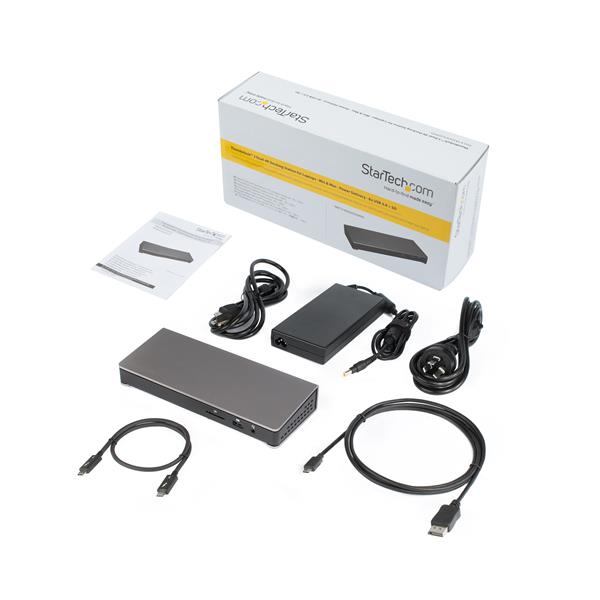London, Ontario-based Startech.com is well known, and rather celebrated for their line of hard drive docks, which, unlike most of the swill out there, are extremely reliable.
In fact, I had 4 hard drive docks here at The Orbiting O’Odua before I snagged this review opportunity….
….which is rather fortuitous because I have two lappers here that can take advantage of the dock.
One of the things we all run into right quick, is screen space on our laptops.
Though I have the privilege of using two of the three best laptops in existence*, I always find myself needing more screen space with all the productivity applications I have opened.
Unfortunately, all of the desktop docks I had sampled or tested were found wanting. The most egregious of them always caused a BSOD/STOP event whenever I undocked a lapper! Moreover, they all were HD devices, barely able to drive my 2560x1600 HP ZR30w monitor.
Not good. Not good at all.
Into this breach, comes the Startech Thunderbolt 3 Dock.
Startech.com Thunderbolt 3 Docking Station for Laptops – Win & Mac**
The unit here, is feature-packed.
It sports, a USB-C port, count them – SIX – USB 3.0 ports with power delivery, an SD slot, A DisplayPort, and an ethernet port!
A true dock, if you will.
Let’s plunge in.
O.O.B.E.
Sometimes, a bad unboxing, or OOBE (Out-Of-the-Box-Experience) is a portend of disaster.
In fact, rarely is a bad OOBE not followed by a bad product, or user experience.
The OOBE for the Startech Dock was very good.
I cracked open the seals on the package, and found the surprisingly diminutive dock safely nestled in the box. Good.
What was included in the package took it away: in addition to the power supply cable, there was a USB-C cable, there was also a USB-C charging cable, a USB-c-to-DisplayPort cable, and an international (I’m assuming Canada) power supply.
Everything I needed.
Again, cool.
Test Setup
I basically used the same monitors for both tests: two Dell 4K monitors, and my trusty old HP ZR30w monitor. I also used the beta 4K monitor I am testing here from time to time. I also connected it to a projector driving a 125” screen.
Test devices were an Apple MacBook Pro, and a Dell XPS15.
Testing the Startech Thunderbolt 3 Docking Station
Dell XPS15
Connect, and go. Fini.
That’s it.
No software to be loaded, no (included) manual to peruse. Just connect-and-go.
I had zero connection and config issues. The dock drove both monitors seamlessly, only needing me to ID and set monitor positions in order to reach my optimal workflow.
I could drag and position any application on whatever screen I wanted to without fuss, and they all moved snappily.
One of my buddy Markham’s pet peeves with PC laptops and external monitors is that removing them from the monitor(s) almost always causes a STOP event. As opposed to when he does the same without errors on his Macbook Pro.
While I know this isn’t an apples-to-apples comparison – pun, but using the Thunderbolt 3 dock as an interlocutor produced zero STOP events or errors with the Dell XPS15.
Finally, I use it to display media on a projected screen that I, in turn, broadcast to my staff. Pretty kewl, of me! 😉
Apple Macbook Pro
This past Christmas, I scored a Macbook Pro which I have so far used sparingly. Primarily because it has that smallish – compared to the XPS15 screen, and because I am me, and it is not Windows!
However, I use it for quickie email triage and troffing off emails where brevity is needed.
It is though, a perfect platform to test the Startech.com Thunderbolt 3 Dock on.
It worked. Perfectly.
What I liked about it was that with the MBP, I just used the two 4K screens, not even looking at that weak play Apple called the MBP screen.
Microsoft Office is the app, and I found myself able to do more on MBP when docked than I have been able to do since December 25 of last year!
I max’d out the USB 3.0 slots on the device with external hard drives, and no worries.
Everything worked.
I am thinking of amp’ing up the ante by ordering up a LaCie Thunderbolt 3 external hard drive just to test performance***. Maybe portable external SSDs, it there’s such a thing.
Conclusions



















